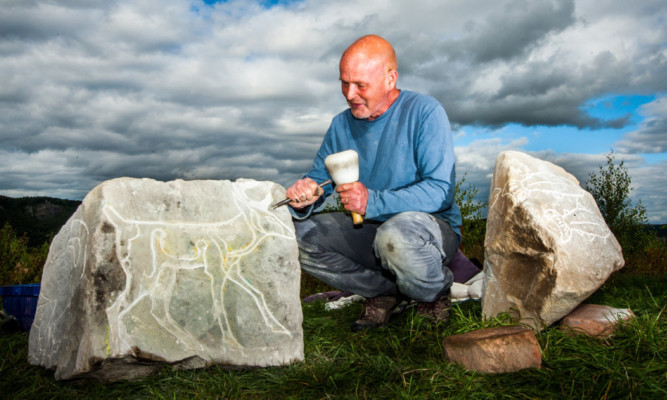Perthshire’s Pictish past has been marked at a stone carving workshop.
Sculptors Susheila Jamieson and James Gordon, from Rachan Design, were at Moncreiffe Hill Wood helping participants add Pictish carvings to boulders.
Site manager Jill Aitken said: “Moncreiffe Hill is home to two very important Iron Age hill forts and thanks to the Gannochy Trust we’re adding to its heritage by allowing people to contribute to carving their own Pictish designs.
“The carved boulders will be on display for future visitors to Moncreiffe Hill Wood to see, enhancing our very popular sculpture trail.”
The Picts were a group of people residing in what is now Scotland and their name comes from the Latin for “painted” or “tattooed” people.
Perthshire is home to a number of important Pictish carvings.
A fragment of a stone cross is housed in Perth museum. It was discovered built into the foundations of a cottage in Gellyburn, near Murthly, from where it was removed and donated to Perth Museum and Art Gallery in 1949.
The museum at Meigle displays 26 Pictish carved stones dating from the late eighth to the late 10th Centuries.
The village was once a centre of Pictish power and wealth. Many of the stones were discovered during the rebuilding of a church that was destroyed by fire in 1869.
Moncreiffe Hill itself boasts at least two hill forts dating from Pictish times which are currently the subject of extensive archaeological excavations.
